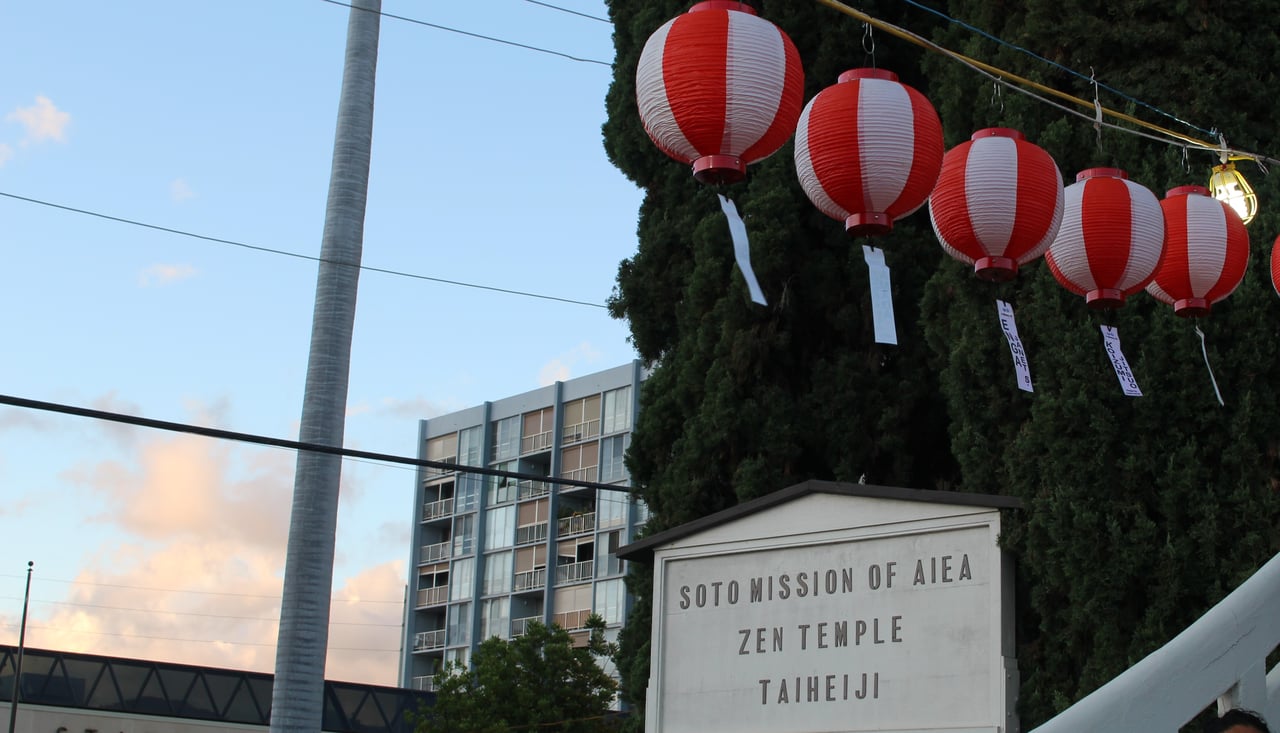HONOLULU (CN) — “Auntie! It’s been so long!”
“Eh, so good to see you guys! Is this your son? So tall now!”
I am stopped in my tracks by the two women who are exchanging hugs and launching into fervent catching up and talking story. I’ve barely made it 10 feet into the event. Conversations in this vein happen about a dozen more times throughout the night as I weave through the thick crowd of reuniting friends and family.
Reunion is the theme of the Japanese tradition of obon, and it is especially apparent this year. After several years of pandemic cancellations, it is no surprise that community members of the Soto Mission of Aiea, a Buddhist temple also called Taiheiji, are eager to return to in-person obon and to see old friends and family members.
“Everybody’s so happy that we’re here! This is usually the only time we get to see so many people from the community and the church," said Susan, a church member and volunteer at the event. "We really miss it when it’s not happening, it’s a bit of work to set up the booth and have the responsibility, but we just really miss it when we aren’t able to see all our friends and catch up,”
Observed in the summer, obon is a Japanese holiday intended to commemorate and honor deceased ancestors. Originally a Buddhist custom, it is believed that ancestors spirits’ return during obon to spend time with living relatives. Some traditions vary between different regions of Japan, but in general the festival lasts for three days, usually in mid-July or August, when it is customary to travel to ancestral homes to reunite with family, both living and deceased.

During this time, it is tradition to visit and clean graves of loved ones, and to make food offerings and prayers at household altars and at temples while lighting incense. Cucumber horses and eggplant cows are crafted to become vessels for the spirits (the slimmer cucumber horse represents hope for the spirit’s swift arrival, while the squatter eggplant cow symbolizes the spirit’s slow return, weighed down by their families’ offerings).
To help guide the spirits home, families hang lit lanterns at doorways. At the end of the holiday, lanterns representing the spirits of the ancestors are set afloat at sea. In Kyoto, an obon tradition involves lighting massive fires on mountainsides in the shape of kanji characters and shapes at the end of the three-day festivities. The fires symbolize sending off the ancestors on their return to the spirit world.
The origin of obon is attributed to the story of one of the Buddha’s disciples. Upon finding out that his mother was trapped in the Realm of Hungry Ghosts, the disciple asked the Buddha how to free her. The Buddha instructed his disciple to make offerings to Buddhist monks on their return from their summer retreat. In doing this, he realized and was grateful for the sacrifices that his mother had made for him during her lifetime. Upon her release from the Ghost Realm, he was so pleased that he began to dance.
Although the religious meaning has waned somewhat throughout the history of the 500-year-old tradition, many of the temples that host obon events continue to offer prayer services alongside the more festive events.
“The belief is that the spirit of our departed loved ones returns during this season of bon," said Taiheiji’s Reverend Shuji Komagata. "Each temple has their little variances, but what we’re basically doing is making dedications and prayers to our departed family members, whether it’s a specific person, like grandma or grandpa, or family in general.”











